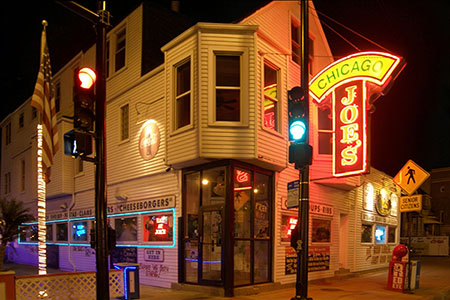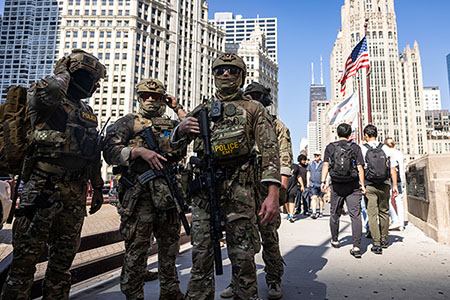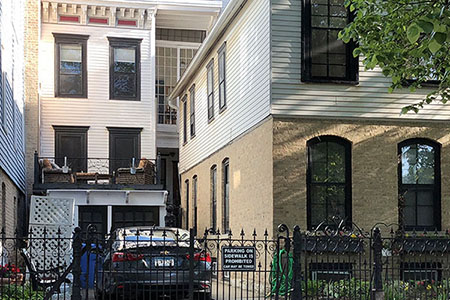Architecture lecturer says now is the time to landmark Goldberg buildings
Dec. 19, 2008 – About 90 people attended a lecture on Marina City architect Bertrand Goldberg Thursday afternoon at Chicago Cultural Center. The lecture sought to answer the question, “Are we ready to landmark Goldberg buildings?” According to Joseph Rosa, the answer is “yes.” The John H. Bryan Curatorial Chair of Architecture and Design at the Art Institute of Chicago spoke of the importance of Goldberg’s work. He described the early career of the architect and how Goldberg linked the concepts he learned in Germany to the architecture of Chicago. Goldberg was born in Chicago but studied architecture at the Staatliches Bauhaus, an art and architecture school in Berlin that was an influence on Modernist architecture. He returned to Chicago in 1934 and studied at Armour Institute (now known as Illinois Institute of Technology). After working with architect George Fred Keck, Goldberg started his own practice in 1937. While at the Bauhaus, Goldberg worked briefly in the office of Ludwig Mies van der Rohe, who designed IBM Center (now 330 North Wabash), which is next door to Marina City. “Goldberg is one of the few to come back and actually build a numerous amount of projects. He is the first American to come back from the Bauhaus and actually build. He came back to Chicago…the city he was part of and brought with him different ways of thinking which I think separates Goldberg from others who worked or studied with Mies while Mies was here in Chicago.” Rosa called the design of Marina City a “great export of the United States…this building is infamous.” He says Goldberg is a natural part of the architectural lineage of Chicago, building off the work of Dankmar Adler, Louis Sullivan, Frank Lloyd Wright, and Ludwig Mies van der Rohe. “Goldberg is a natural person on that lineage to Chicago and its importance. He was firmly entrenched in the city, very much a part of the city.”
He says it’s important that efforts be made to re-think how Goldberg buildings are used, to keep them relevant. “If we do eliminate them in 20 years, there will be a…missed opportunity to do what we needed to save a career that’s very important to the city and one of our most important exports for post-war work.” The lecture was sponsored by Landmarks Illinois, a not-for-profit organization with 2,500 members dedicated to historic preservation. Founded in 1971, its original mission was to stop demolition of significant buildings in downtown Chicago. It now has a variety of programs that continue to facilitate, educate, and promote historic preservation.
|






 Related story:
Related story: 








